 Neurology is primarily characterized by a variety of diseases which seem very similar and are therefore difficult to distinguish between. Skill at differential diagnosis is therefore absolutely paramount.
Neurology is primarily characterized by a variety of diseases which seem very similar and are therefore difficult to distinguish between. Skill at differential diagnosis is therefore absolutely paramount.
Neurological Differential Diagnosis is a streamlined handbook of prioritized differential diagnosis, to be used both in clinical practice and for exam review.
By presenting differential diagnosis in order of frequency and importance, this book provides a practical handbook for clinicians in training, as well as a potential resource for quick board review. Whilst the book covers the most important syndromes and disease entities, readers are referred to other texts for more exhaustive differentials. By limiting differentials in this way – to the most likely and most serious diagnoses – the reader can more easily recall relevant disease processes when faced with a particular clinical situation, whether it be a patient in the emergency room or a difficult question on the board examination.
The book specifically targets neurology residents and fellows, with overlap to neurosurgery and psychiatry. Internal medicine physicians with an interest in neurological problems and medical students looking for an edge in clinical neuroscience would also benefit from this text.
The content is primarily mid-level material, in a pedagogic format.
In order to organize the students’ thought processes concise tables and line drawing templates are included. The book is organized into broad chapters by type of disorder and some overlap occurs between particular chapters.
From the Back Cover
Neurological Differential Diagnosis: A Prioritized Approach provides a practical, problem-based differential diagnosis for the entire spectrum of neurological disease.
The unique aspect of this book is that the differential diagnosis lists are prioritized by listing the most common possibilities first. Furthermore, less common diagnoses that are potentially fatal or disabling in the acute period (diagnoses that “you don’t want to miss”) are also highlighted. So the most common and the most dangerous disorders are given greater weight than rare or slowly evolving conditions that are less urgent, like a top 10 list of most common clinical neurological scenarios.
Moreover, each differential also contains characteristics that help distinguish the specific diagnoses. Neurological Differential Diagnosis: A Prioritized Approach is a user-friendly and easily understandable guide to the most common and most dangerous neurological conditions.
Neurological Differential Diagnosis: A Prioritized Approach has been written for practitioners and medical trainees with an interest in neurological diagnosis. This includes neurology, neurosurgery and psychiatry residents, also internal medicine or family medicine residents, and, of course, medical students. Primary care practitioners should also find the organization of this book useful in their daily practice.
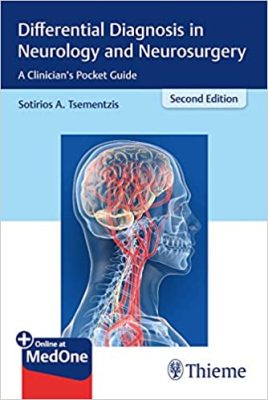 Now in a greatly expanded and updated new edition: The essential pocketbook for rapid and correct differentiation and interpretation of signs and symptoms of neurological and neurosurgical diseases and conditions.
Now in a greatly expanded and updated new edition: The essential pocketbook for rapid and correct differentiation and interpretation of signs and symptoms of neurological and neurosurgical diseases and conditions.

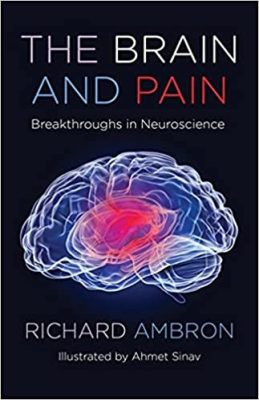 Pain is an inevitable part of existence, but severe debilitating or chronic pain is a pathological condition that diminishes the quality of life. The Brain and Pain explores the present and future of pain management, providing a comprehensive understanding based on the latest discoveries from many branches of neuroscience.
Pain is an inevitable part of existence, but severe debilitating or chronic pain is a pathological condition that diminishes the quality of life. The Brain and Pain explores the present and future of pain management, providing a comprehensive understanding based on the latest discoveries from many branches of neuroscience.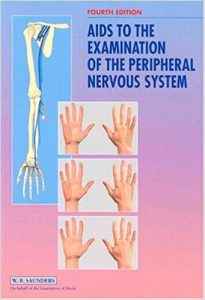 This new edition of the highly successful short guide to the examination of the peripheral nervous system has been brought up to dateand includes new illustrations, to ensure it retains its place as the standard short text on the subject.
This new edition of the highly successful short guide to the examination of the peripheral nervous system has been brought up to dateand includes new illustrations, to ensure it retains its place as the standard short text on the subject.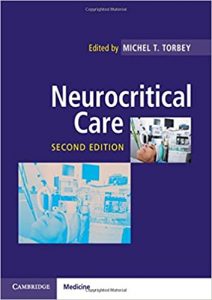 A comprehensive, practical guide, providing critical solutions in the management of critically ill neurologic and neurosurgical patients.
A comprehensive, practical guide, providing critical solutions in the management of critically ill neurologic and neurosurgical patients. Now in its Fourth Edition, this text gives physiatry and neurology residents a comprehensive, practical introduction to electromyography. Section I reviews the anatomy and physiology of nerve problems in relation to the planning and performance of electrodiagnostic procedures. Section II provides technical information on electrophysiology, instrumentation, and specific techniques, with digital photographs showing important surface anatomy. Section III guides physicians through various clinical EMG problems, beginning with the patient’s symptoms and proceeding through electrodiagnostic evaluation and diagnosis. This edition includes over 500 new illustrations.
Now in its Fourth Edition, this text gives physiatry and neurology residents a comprehensive, practical introduction to electromyography. Section I reviews the anatomy and physiology of nerve problems in relation to the planning and performance of electrodiagnostic procedures. Section II provides technical information on electrophysiology, instrumentation, and specific techniques, with digital photographs showing important surface anatomy. Section III guides physicians through various clinical EMG problems, beginning with the patient’s symptoms and proceeding through electrodiagnostic evaluation and diagnosis. This edition includes over 500 new illustrations.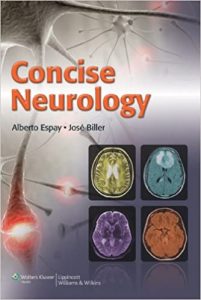 Concise Neurology presents neurology content in a logical sequence within each of ten chapters. Virtually every topic of interest to clinicians is covered in one or two pages to facilitate efficient review of the core concepts in diagnosis and treatment for each syndrome or disease. The author has maintained a thematic unity across related pages, which allows for random reading to be almost as fruitful as sequential reading. For example, a reader who opens the “anticoagulation” page will find a capsulized review of the heparin, warfarin, and thrombolysis stroke trials and the evidence supporting the current therapeutic guidelines. Flipping through neighboring pages will rapidly refresh the position of the clinically relevant thrombophilias in relation to the coagulation pathway, indications for lifelong anticoagulation, causes of hyperhomocysteinemia, and the bare bones of the most important etiologies of strokes in the young.
Concise Neurology presents neurology content in a logical sequence within each of ten chapters. Virtually every topic of interest to clinicians is covered in one or two pages to facilitate efficient review of the core concepts in diagnosis and treatment for each syndrome or disease. The author has maintained a thematic unity across related pages, which allows for random reading to be almost as fruitful as sequential reading. For example, a reader who opens the “anticoagulation” page will find a capsulized review of the heparin, warfarin, and thrombolysis stroke trials and the evidence supporting the current therapeutic guidelines. Flipping through neighboring pages will rapidly refresh the position of the clinically relevant thrombophilias in relation to the coagulation pathway, indications for lifelong anticoagulation, causes of hyperhomocysteinemia, and the bare bones of the most important etiologies of strokes in the young. Neurology is primarily characterized by a variety of diseases which seem very similar and are therefore difficult to distinguish between. Skill at differential diagnosis is therefore absolutely paramount.
Neurology is primarily characterized by a variety of diseases which seem very similar and are therefore difficult to distinguish between. Skill at differential diagnosis is therefore absolutely paramount.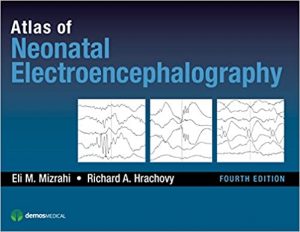 “This book has been incorporated with available information and current guidelines, and presents a comprehensive view available for professionals including trainees, technologists and experienced neurologists related to neonatal EEG and epilepsy. I believe this book will be a very useful reference for epileptologists meeting their clinical needs concerning the interpretation of neonatal EEG.”
“This book has been incorporated with available information and current guidelines, and presents a comprehensive view available for professionals including trainees, technologists and experienced neurologists related to neonatal EEG and epilepsy. I believe this book will be a very useful reference for epileptologists meeting their clinical needs concerning the interpretation of neonatal EEG.”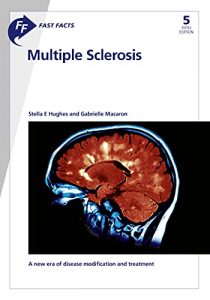 Multiple sclerosis (MS) is a leading cause of disability in young adults, carrying a considerable individual and societal economic burden. The development of disease-modifying therapies and updates to diagnostic criteria are leading us into a new era for MS management, both in the earliest disease phases and progressive MS. In this completely revised/fully updated edition of Fast Facts: Multiple Sclerosis, we present the most recent evidence on disease pathogenesis and all clinical aspects of the condition, as well as the latest on disease-modifying therapies and other potential treatments. Given the need for multidisciplinary management of MS, we have written this resource for the benefit of all health professionals involved in MS care. Table of Contents: • Epidemiology and genetics • Pathology • The clinical picture • Treatment of relapses and symptoms • Disease-modifying treatment • Emerging therapies • Special MS populations • Lifestyle considerations and the multidisciplinary team • Advanced MS
Multiple sclerosis (MS) is a leading cause of disability in young adults, carrying a considerable individual and societal economic burden. The development of disease-modifying therapies and updates to diagnostic criteria are leading us into a new era for MS management, both in the earliest disease phases and progressive MS. In this completely revised/fully updated edition of Fast Facts: Multiple Sclerosis, we present the most recent evidence on disease pathogenesis and all clinical aspects of the condition, as well as the latest on disease-modifying therapies and other potential treatments. Given the need for multidisciplinary management of MS, we have written this resource for the benefit of all health professionals involved in MS care. Table of Contents: • Epidemiology and genetics • Pathology • The clinical picture • Treatment of relapses and symptoms • Disease-modifying treatment • Emerging therapies • Special MS populations • Lifestyle considerations and the multidisciplinary team • Advanced MS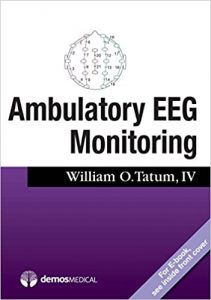 With the recent development of new technology and practices in the field of ambulatory EEG (aEEG), the time is right for a practical reference on the application of aEEG in clinical practice. This authoritative guide to prolonged EEG recording outside the hospital or clinic is a valuable resource for anyone involved in long-term EEG monitoring and interpretation. Bridging the gap between routine scalp EEG and in-patient video EEG monitoring, aEEG has evolved to provide cost-effective, high-yield, high-tech recording for evaluation of epilepsy diagnoses, nonepileptic attacks, quantification of seizures or epileptiform burden, and other issues requiring extended EEG observation for paroxysmal neurological events in any environment.
With the recent development of new technology and practices in the field of ambulatory EEG (aEEG), the time is right for a practical reference on the application of aEEG in clinical practice. This authoritative guide to prolonged EEG recording outside the hospital or clinic is a valuable resource for anyone involved in long-term EEG monitoring and interpretation. Bridging the gap between routine scalp EEG and in-patient video EEG monitoring, aEEG has evolved to provide cost-effective, high-yield, high-tech recording for evaluation of epilepsy diagnoses, nonepileptic attacks, quantification of seizures or epileptiform burden, and other issues requiring extended EEG observation for paroxysmal neurological events in any environment.